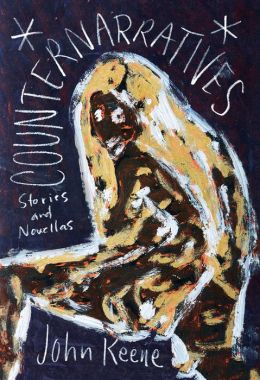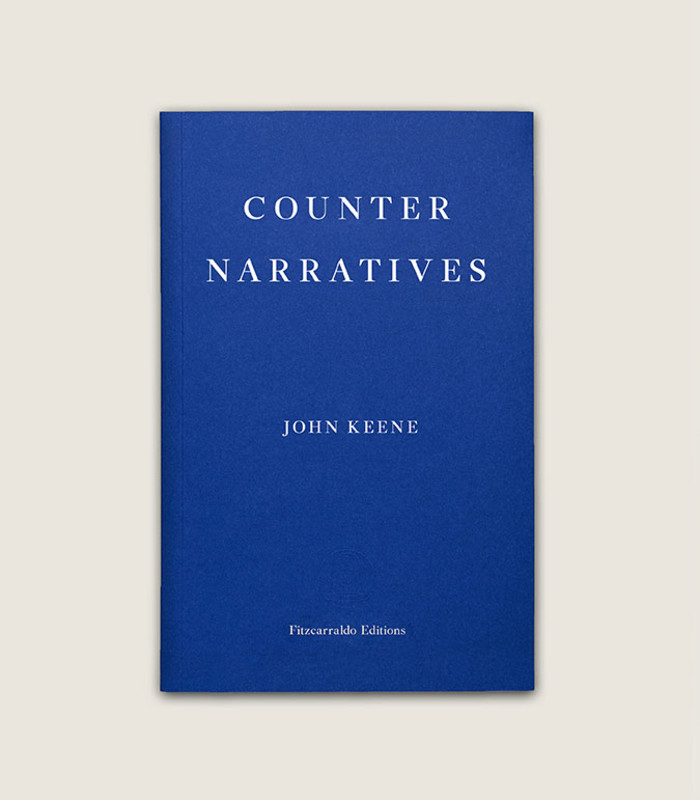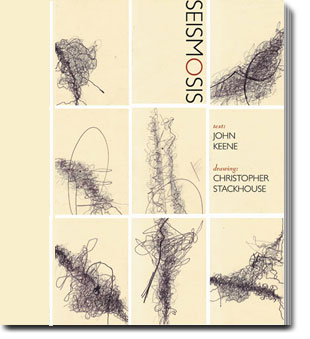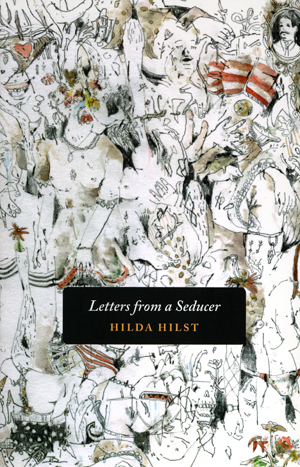Twice today during his press conference on the debt limit talks,
President Barack Obama used the word "
entitlement" to describe the three major
social safety net programs--
Social Security, Medicare and Medicaid--that the
Republicans and even he and some
Democrats want to put on the chopping block. Considering the terms you might use to describe these programs, "entitlement," which has become the standard among both parties, journalists, economists, and many others, strikes me as a terrible choice, but it's as common as daylight before between dawn and noon. I mention Obama's invocation of "entitlement" not to debate his or Congress's plans, but as an opening gambit in discussing
James Geary's excellent and thorough new generalist study,
I is an Other: The Secret Life of Metaphor and How it Shapes the Way We See the World (New York: HarperCollins, 2011). Geary doesn't touch upon the term "entitlement" directly, but his larger argument demonstrates how such words work, and why they resonate for us in certain ways. What he does say is that if you take almost anything anyone says, you can pluck out metaphors almost every 10 to 25 words, or about 6 every minute. In this paragraph alone, I've used a number of them: "put on chopping block," "consider," "strikes me," "common as daylight" (a simile), "debate," "opening gambit," "demonstrate," "resonate," "pluck out," to name a few. We cannot communicate without it.
But first, back to
entitlement: It's clear enough to me that the term is a naturalized metaphor, a noun deriving from the much older English verb "entitle," which appears in the 14th century, its origin
Anglo-Norman, from
entituler or
entiteler, from the Latin intitulare, fr.
in+titulus (title). "Entitle" originally meant to give a name or title to, as in a deed, right or claim, or for a text, though since the 1960s and the rise of pop psychology, "entitlement" has taken on a negative valence in psychology and the wider cultural discourse. We often speak of "entitled" people as those expecting something they they may or may not deserve. Yet even before pop psychology encoded in the word is the metaphorical idea of individuality and private ownership and authorship. "Entitlement's" metaphorical effects in politics are real. "Cutting entitlements" sounds far less troubling, and has a different cognitive and emotional effect on us, than appeals to "cutting the social safety net." This term is more obviously a metaphor: a "safety net" we can all easily visualize as something helpful—something we want--to catch us if we're on a trampoline or a highwire or any high place and might fall; the "social" involves a group of people, likely a community, which we also seek, at a prelinguistic level.
You might dismiss this as just so much ado about language and competing terms, or, more specifically, linguistic framing, as cognitive linguists like
George Lakoff have rightly described it. But what Geary does, in 226 entertaining pages, plus ample end-notes, a fine bibliography, and a thorough index, is to show that in fact, the very use of terms like "entitlement" vs. "social safety net" affects--that is, impacts emotionally and psychologically—us at deep cognitive level, prelinguistically, in part because it plugs into our bodily experiences and understanding of the world. Take that "falling" aspect of the safety net: all humans, across languages, grasp the concept of falling and its dangers. Metaphors of "falling" often tend to be negative, across languages and cultures. The
Biblical story of
Adam and Eve's banishment from the
Garden of Eden is also known as a "the Fall," but all kinds of negative processes and their outcomes often include ideas of "falling."
Falling ill, falling from grace, falling short, falling under a spell, falling to pieces, and so on, are all metaphorical uses of the term, idioms that English speakers often don't think twice about. Yes here's falling
for someone, and
falling in love, but also
falling out of it.
Geary shows in every chapter that metaphors are more than just figurative uses of language. As he argues, "Metaphor is a way of thought long before it is a way of with words." (p. 3). Even the word "metaphor" itself is a metaphor, deriving from the Greek term to "carry over" (
meta, across +
pherein, to carry, related to English's
to bear). In linguistic terms, it is a substitution of one term for another ("your eyes are diamonds"), and in psychocognitive terms, it is a powerful system for making meaning, one of the most important for any language and our understanding of the world, by leveraging what we sense and name, to create new names and ideas. Throughout the book and in particular at the beginning of each chapter, Geary points that poets, perhaps more so than many, have profoundly grasped metaphor's implications, as it is intrinsic to the poetry as an art and literary form. French poet
Arthur Rimbaud's main principle,
Je es un autre, or
I is an other, is "metaphor's defining maxim, its secret formula, and its principal equation." (2) Indeed, poet
Robert Frost, in a 1930
Amherst College address, "Education in Poetry," urged students to study metaphor to be able to "evaluate the claims made by historians or scientists, newspaper editorialists aor political campaigners," noting that we often don't grasp when we're being "fooled" by metaphor. (35) Geary links Frost's and other poets insights to the larger issue of metaphor's power in structuring our thinking, helping us both to see and ravel patterns, often without our realizing it, for metaphor arises out of our most basic human--we could even say animal—experiences in the world.
Rather than a technical study of metaphor, of which there are many, Geary synthesizes a raft of studies and discussions about
how metaphor works and works on us. Chapters explore how every language represents a kind of "fossil poetry" such that the naturalization of metaphors I describe above permits the construction and development of languages, and enables other kinds of innovation and creativity; how it relates to our grasp of the abstractions of numbers and finance (sometimes to deleterious effect, as in the endless analogies to the "family around the kitchen table"); how it operates at various levels in the mind and brain, because there is a growing scientific study of metaphor; how, as I noted above with the political use of "entitlement" and other metaphors can have profound ramifications in advertising and political framing; why certain metaphors are nonfunctional or just laughably bad; and why those old saws and platitudes we heard from parents and relatives guide for us, even when we might consciously reject them as, well, so much empty language.
Geary demonstrates, through deft argumentation and copious citations of studies, that it's our sensory experience in the world that informs our metaphorical, and thus linguistic understanding, world. We cannot help but think of the sun as good and night as bad, at a primal level, or orientate ourselves in space and link this to metaphors of up and down or directionality; we process colors and associate these metaphorically without fully understanding how this operation occurs. Interestingly he does not point out, as Lakoff has, that the central idea underpinning the post-structuralist perspective of language and our systems of signification, that they are fundamentally arbitrary, as
Ferdinand de Saussure suggested at the turn of the 20th century, is deeply problematic and cognitively and biologically just wrong. I particularly enjoyed his discussions, which he moves through with clarity and verve ("move" being a metaphor), of psychological and cognitive experiments that involve linguistic and even visual priming, using metaphors, which determine test participants' responses without their having any clue about how the language affected and effected their behavior. To give one example, one experiment exploring corporal metaphor use aimed to explore the priming effects of the "nation = body" metaphor by having participants read an article
ostensibly from a popular science magazine, describing airborne bacteria as ubiquitous and harmful to human health. Another group read a similar article describing airborne bacteria as ubiquitous but harmless to human health.
Both groups then read parallel articles about the history of U.S. domestic issues than immigration. The only difference between the two articles was that one contained "nation = body" metaphors...and the other did not.
Both groups then answered two questionnaires. The first gauged their agreement with statements about immigration and the minimum wage....The second assessed their concerns about contamination....Subjects who read the article describing airborne bacteria as harmful reported being more concerned about contamination. No surprise there.
But the same people also expressed more negative views about immigration when America was metaphorically described as a body. Those who read the more netural description of U.S. domestic issues had more positive views of immigration, even though they read the article describing bacteria as harmful. Both group's views about the minimum wage were about the same because, unlike immigration, the "nation=body" metaphor does not attend that issue. (128-129)
Researchers realized that manipulating someone's attitude about one issue (health) affected that person's attitude about an unrelated issue (immigration) if they were linked metaphorically. This is only one of many examples Geary provides, going so far as to cite legendary figures like neuroscientist
V. Ramachandran, famous for his "phantom-limb" studies, but whose basic insights into synesthesia and graphemes offer a way of understanding how metaphor works, linking this idea to
Wolfgang Köhler's 1929 discovery of the "bouba-kiki" effect, in which he showed
Tenerife islanders two shapes, one hard and spiky, one soft and bloblike, and asked them associate them with two made-up words, "takete" and "baluba"; participants overwhelmingly linked the former to the spiky shape, the latter to the softer blob, and Ramachandran and cognitive psychologist repeated Köhler's experiment with the words "kiki" for "takete" and "bouba" for "baluba," getting the same result, with 98% of research subjects linking "kiki" to the spiky shape and so on.
This brings me back to the relentless use of "entitlement," mindless in the case of many journalists, unintentionally harmful in the case of a brilliant, liberal economist like
Paul Krugman because it's the technical term he and his peers have learned to use, and extremely destructive as it leaves the mouths of the President and top Congressional leaders who, like the many sworn enemies of the social safety net, want to "reform" it, "privatize" it, and outright "end" it. What Geary goes a long way to proving is that metaphor is hardly an "abusio," as the old rhetorical term suggested, or a throwaway figure best left to the poets and having no meaning beyond being clever and illustrative, as some anti-rhetoricians might argue, but rather a foundational aspect of our human experience of the world intimately and indissolubly linked to how we think and speak and act. Language matters, metaphors especially, Geary makes clear, more than the vast majority us ever imagine.














